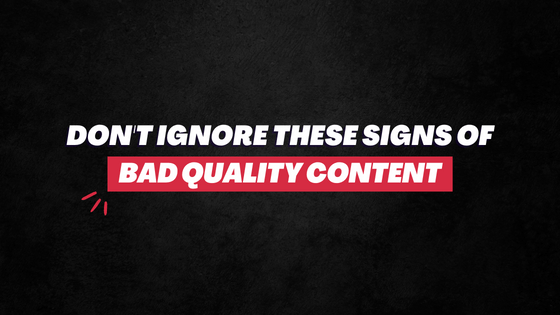I mean, clearly, your effort is worth much more than this small number, right?
Comes in content revamping and repurposing—the backbone of content marketing, also an important (but ignored) part of on-page SEO techniques.

And it is something you should err, must do too.
Let’s first understand the basics.
What does content revamp means?
It is the process of updating your old content, making minor tweaks, changing its date from its original to the latest one, and then distributing it on various channels.
In the simplest form, it is basically republishing an existing article with a new date.

Once done revamping and modifying, update the publish date of the article to the latest one and then fetch the URL to Google and Bing.
That’s it!
The search bots will now crawl the piece of content, check the latest date, treat it as fresh and prioritize it high on SERP. This can significantly improve not just your ranking but also Click-Through Rate.
I personally republish my old contents daily with slight modifications in anchor text for internal links. This helps me easily bring hundreds of new readers to posts that I have written months back.
Tips:
- When you’re unable to publish new content, republish the old one.
- Pick an article that’s underperforming. Modify it with better keywords, headlines and Meta keywords.
- Make sure the facts and figures in it are up-to-date.
- Don’t forget to fetch the revamped content on Google Search Console and Bing Webmaster.
Content revamping only takes 10-15 minutes. And it can bring a miraculous boost to your organic traffic by having search engines crawl and find fresh content on your blog more frequently.
Recommended Read: 15 Actionable Steps to Update Old Content And Increase Organic Traffic
What does repurpose content mean?
Repurposing your content is much more than just refining your old one with fresh information.
While content revamping focuses more on bringing organic visitors, repurposing is more about engaging a segment to fulfill a different objective.
Aside from adding the latest facts and figures, the process of revamping includes changing the format and goal of the content.

Say you wrote a piece on “how to beat procrastination?” At the time of its original publish date, you wrote it to attract readers and then gain subscribers with suitable Call-To-Action.
Now, after a few months you have launched a premium course on how to beat procrastination.
What you can do now is instead of writing an entirely new content to generate leads, you simply repurpose your original content “how to beat procrastination” into, say, eBook, audio or presentation format with slight changes in the body to better target your different segments of the course, from students to working professionals.
First, via this post, you wanted to bring subscribers. Now, you want to bring qualified leads to sell your course.
You just repurposed the article.
Of course, the example is quite simple. You can use the strategy of content repurposing in seamless ways to generate more value from your old contents, to achieve different goals and to reach more audience that may have missed your original article.
It’s very evident why you should repurpose content:
1) It saves a lot of your time.
2) Your old content (and efforts) become much more valuable.
3) You get more traffic and leads, thanks to the repurposed, highly targeted and comprehensive content.

- Pick a pillar content that is really great and has brought good traffic.
- Be extremely clear on what different goal you want to achieve.
- Know which specific segment you want to target.
- Select the content format you want to repurpose the original content into.
When to repurpose content and when to revamp or republish it?
This question isn’t really that complicated.

This would keep your regular visitors engaged, as well as maintain the blog’s crawl rate and flow of organic traffic.
Revamping is done when you want the same content to target the same audience and fulfill the same purpose.
It does require a few changes from time to time. But it caters the same goals why it was created in the first place.
On the other hand, repurposing content should be done when you want to pursue a different goal and target a different (or broader) audience base.
Of course, in this process, a lot of thinking and planning needs to go. But in the end, it would all come down to the basic question—why do you want to repurpose your content:
- Is it to get more traffic?
- Is it to gain more subscribers?
- Is it to generate more leads?
- Is it to sell your new product?
Depending on these goals should you decide whether or not and how to repurpose your content. The reused content could turn into any format, from videos and webinars to eBook to presentation to infographics.

Don’t be one of these bloggers. Be like 29 percent of leading marketers who reuse and repurpose their contents systematically.
- Is Low Click-Through Rate Destroying Your SEO Strategy?
- What Is The Perfect Keyword Density Percentage?
- Your Font Is Hurting Your Website Ranking (Fix It!)
- Do Outbound Links Help SEO?
- Level-up Your On-Page SEO Game With Whitespace
- How To Use Interactive Contents to Increase SEO Ranking?
- Robots.txt For SEO: How (And Why) You Must Use It
- Website Speed in SEO: Does Your Site Load in 2 Seconds?



